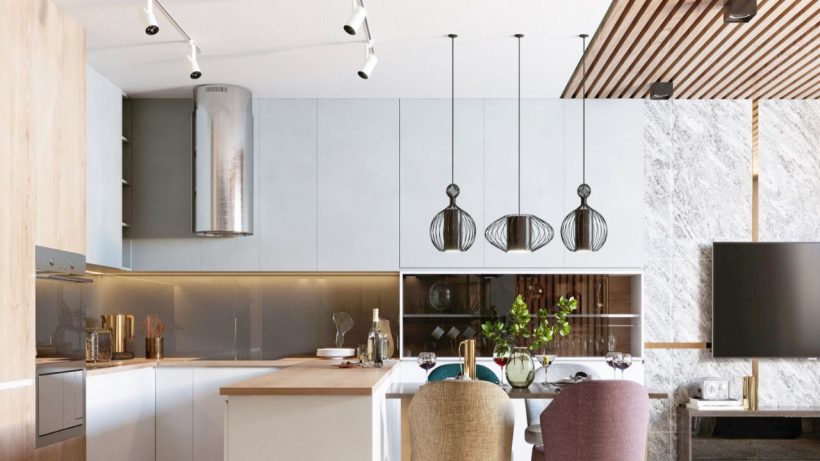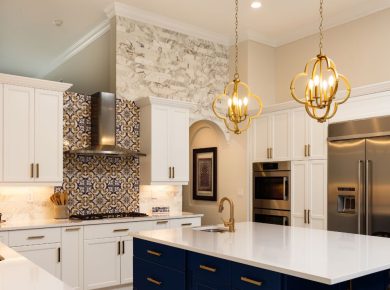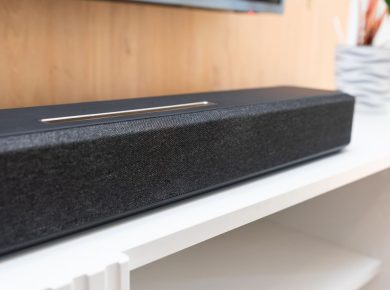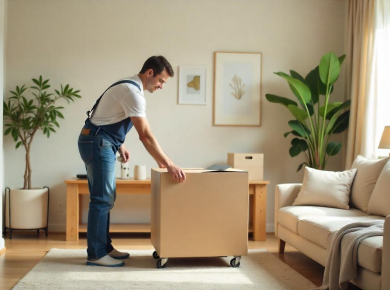Tip: Declutter Rather Than Hoard We often have an unnecessary amount of crockery that takes up too much space and is rarely used. If you can’t part with an item, consider whether it should be stored in the kitchen or might be better placed elsewhere.
Tip: Store Dishware in a Buffet Cabinet Display your finest dishware in a buffet cabinet. Remember, you may not need all 12 plates, so consider parting with some.
Don’t Skip This Step After clearing out the cabinets – yes, everything! – seize the opportunity to thoroughly wipe them down. Even if they appear clean, a bit of water won’t hurt. When else are the cabinets empty?
If you have drawers, consider using non-slip mats. They prevent items and organisers from sliding around when the drawer is closed.
Typical Categories Now that you’ve cleared everything out, sorted items into three groups, and cleaned the cabinets, continue with categorisation. Based on the purposes and areas you initially defined, categorising should be straightforward.
Spices, plates, cutlery, glasses, pans, pots, oils, bowls, sieves, kitchen gadgets, baking utensils, pitchers, vases, sponges, cloths, tea towels, washing-up liquid, and more.
Once you’ve organised your utensils by category, you can start the actual organisation process.
Organising Drawers and Kitchen Cabinets Begin with items you use daily. Knives for food preparation should be readily accessible on the worktop. Pots and pans should be near the hob, as should spices. Plates and glasses might be on the opposite side of the dishwasher or right next to it for easy unloading.
Tip: Less is More Focus on what you truly need.
Tips: Organising Kitchen Cabinets Placement depends on your routines. Oven mitts should be by the oven, freezer bags by the freezer, and tea towels by the sink. Arrange your kitchen so that you and your housemates can navigate it easily.
When restocking, ensure that children can’t access certain items, like cleaning products and lighters. Use lockable boxes or store these items on a higher level.
Ordering System for Kitchen Cabinets In addition to drawer dividers, uniform food storage containers are a great idea for tidying drawers. Food is neatly packed, and with transparent containers, you can see how much you have left.
Stack lunchboxes to save space, placing the lids upright beside them. Many consider spice organisation a sign of a tidy kitchen. You might have a shelf for all your spices, or they might be in a drawer, but they should all be in one place for easy access. Ensure the labels are visible depending on the storage location.
You can stack dishware or store it in a vertical organising system. But remember the 80% rule: cabinets and shelves shouldn’t be overstuffed, allowing easy access and longevity of the organisation system.
Drawers help maintain an overview; remember the 80% rule here, too.
Tips for Order in Open Shelves Kitchen cabinets often have shelves without specific partitions. But now that you know what you want to store, you can create your own divisions using containers or other organising aids to maximise space usage.
Don’t waste any space. Shelves often have deep and tall compartments that could be utilised more efficiently by adding more shelves, hanging shelves, or boxes. There are also drawers for shelves that make partitioning easier.
Creating Storage Space in Cabinets and the Kitchen Kitchen space is limited, so it’s worth using doors, gaps, and walls. How about a compartment for washing-up liquid in the sink cabinet door? That way, you keep track and have everything where you need it.
You can also place kitchen utensils like sauce ladles, spatulas, and whisks decoratively near the stove for quick access. You can find additional storage on the side walls of kitchen cabinets, where you can keep cookbooks and recipes.
Tip: Hang Instead of Set Consider hanging your pans, cutting boards, and kitchen utensils. They’re out of the way and don’t take up valuable cabinet space, leaving more room for supplies and food.
Trick: Utilise the Space Between the Stove and Wall The small niches between cabinets and walls are perfect for storing trays, baking sheets, or narrow sliding shelves. This space can also be used for hanging towels and brooms.
Every corner you find should be seen as an opportunity to establish order in your kitchen. For example, how about on top of the kitchen cabinet? Here, you can store kitchen appliances in transparent containers that are rarely used.
General Tips for Stockpiling The amount of your supplies can fluctuate greatly, so I recommend starting with the minimum when obtaining organising systems. What do you always keep at home that needs a specific spot?
Additionally, consider the type of supplies you have. Are they canned goods, cartons, bottles, tubes, cans, jars, cardboard packages, or irregular plastic packaging? Do you want to transfer some of them to different containers, or is that not an option? Are your supplies used daily, or do they sit longer? These considerations influence your storage decisions.
Keep an Inventory To ensure an orderly kitchen, it’s helpful to have an overview of your supplies. This doesn’t have to be a detailed list, but it’s good to know what you have at home. You could jot down a quick note when you’re running low on something or use an app designed for inventory management.
The inventory is also useful for meal planning. You can see what you have and plan meals around it, reducing waste and saving money. The inventory should be updated regularly, either daily, weekly, or after every shopping trip, depending on your household’s needs.
Regularly Check for Expired Food Regularly checking the expiry dates of your foodstuffs can prevent waste. You’ll know what needs to be used soon and what can wait. This also helps maintain order in your kitchen. washing up bowl with plug
Conclusion: Maintaining Order Once everything is organised, the challenge is to maintain it. Everyone should know where things go. It can be helpful to label shelves, especially in the beginning. You may also want to set a regular schedule for quick checks, ensuring everything is in its place.
Remember, your kitchen doesn’t have to be perfect, but it should work for you and your household. The key is to find what works best for you and stick to it. Happy organising!









